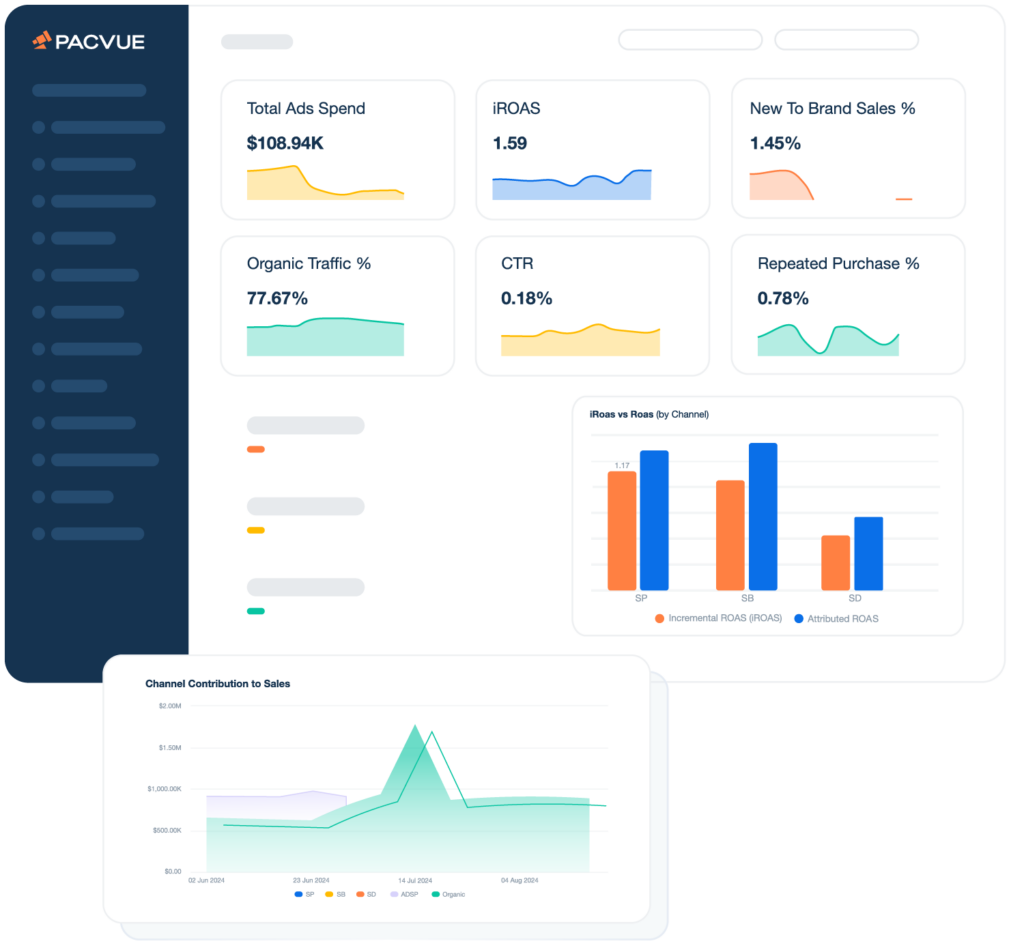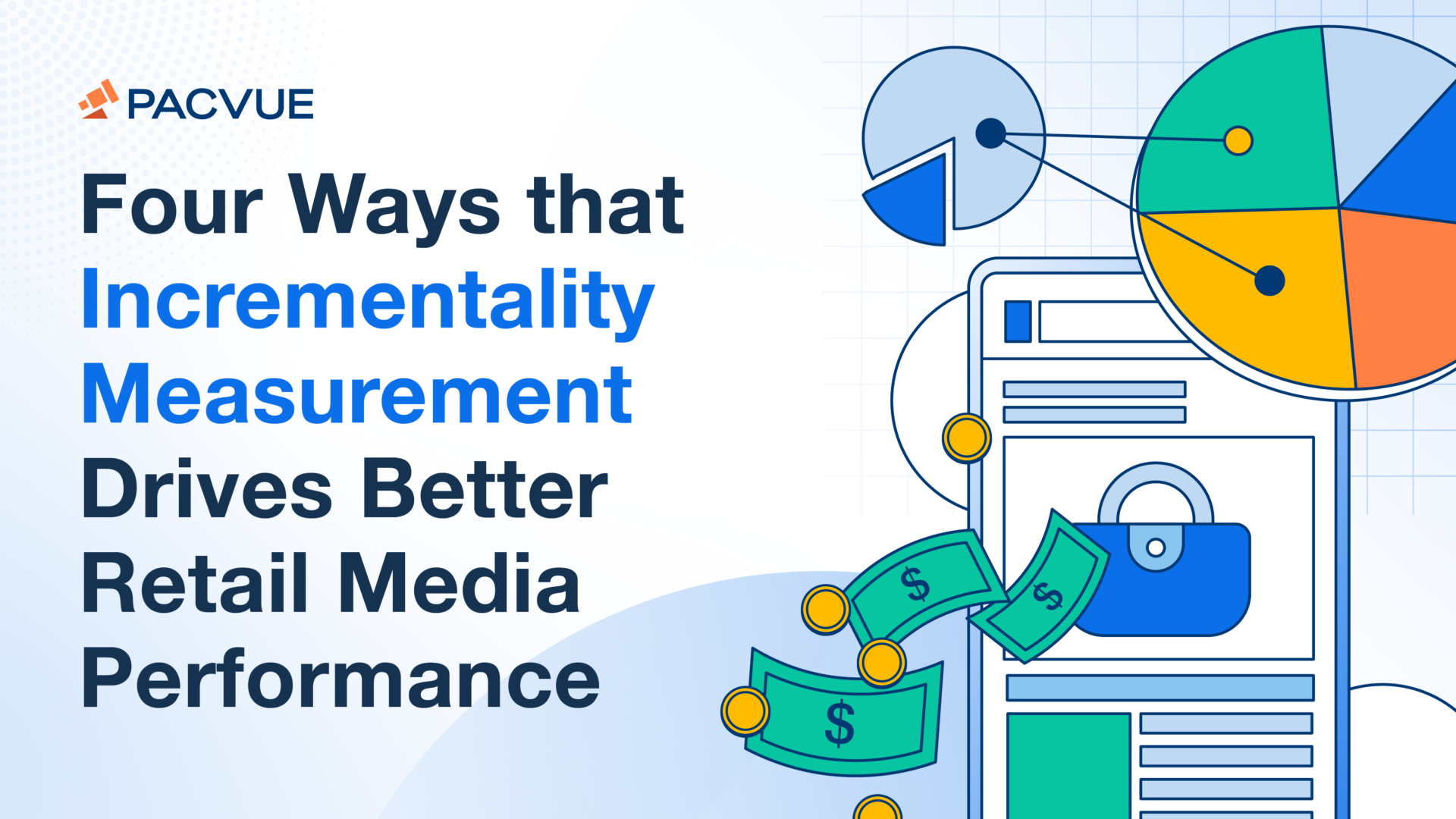Different brand teams define incrementality in slightly different ways, but it usually all comes down to one thing: “would this purchase have occurred without the influence of my advertising?”
Traditional ROAS has been the commonly accepted way to measure the effectiveness of ad spend, but, since ROAS is usually based on a last touch attribution model, it doesn’t always consider the impact of other touchpoints in a customer’s journey. That’s what makes incremental return on ad spend (iROAS) such an important metric. As the retail media ecosystem becomes more competitive, measuring which ads are truly driving incremental sales – and which ads are reaching customers who would buy anyway – gets more important.
Ultimately, incremental return on ad spend (iROAS) is the metric that vendors can use to more reliably prove the performance of retail media and better understand which tactics work best. If you can measure iROAS in an accurate way, you can grow revenue faster by eliminating wasted ad spend and identifying your highest-performing acquisition channels and audience types to optimize your strategic planning.
Definitively pinpointing the impact of marketing activity across every touch point and tying it to sales is not easy. In fact, we’ll admit that it is impossible to track and measure every interaction a customer has with your brand.
But Pacvue’s new Incrementality Console comes the closest to helping brands accurately answer the question of whether a purchase would have occurred without the influence of advertising. Our iROAS model is the most comprehensive incrementality model available, developed by eCommerce and advertising veterans with decades of expertise, combined with dozens of inputs, data sources, and multiple advanced data science models to reliably measure incremental revenue growth. In comparison, most incrementality models rely on fixed formulas with two or three variables. Our model is made to be adaptive, reacting to the data of each brand, so that we can provide high confidence results that take your incrementality measurement to the next level.
For advertisers looking to get started with iROAS, there are four primary ways to apply incrementality measurement to optimize performance:
What to Do with iROAS
Once you’ve started to measure iROAS, you’ll have another powerful metric (alongside performance metrics like ROAS, SOV, CAC, etc.,) that you can leverage to analyze campaign performance.
Here’s what you can do with iROAS data to drive better results:
1. Get a Macro View of All Incrementality Signals for Better Budget Efficiency.
With Pavue’s iROAS Dashboard, you get access to a single screen that aggregates all the important incremental sales signals across your retail media campaigns. These include incremental sales and iROAS by brand, ad type, channel, and campaign tag (currently in alpha), along with several high-value metrics like repeat purchases and organic contribution percentage.

2. See iROAS Trends Over Time to Better Forecast the Future.
Sometimes, different time ranges can show significant differences in sales – especially when it comes to seasonal products and events. There might be big differences from campaign to campaign, too, whether it’s a specific product promotion or a change in budget or strategy.
This is why Pacvue includes a clear dashboard that displays iROAS trends over time that you can adjust for date ranges as needed. This is a multivariate dashboard that can be used to see the difference in time by ad type as well, so you can get a snapshot of what ad types and what time ranges drive higher iROAS.
3. Identify the Best Channels and Ad Types for Sales for Investment.
The Pacvue iROAS solution includes a Channel Contribution to Sales dashboard to help you get granular data on your best channels – like whether you should invest more budget into retail media or DSP advertising – as well as ad types. The ad types are broken down by formats like organic, Sponsored Display, Sponsored Products, and Sponsored Brands.
With this powerful new view, advertisers can instantly see the best sources of iROAS broken down by true performance metrics.
4. Understand Prospecting Performance Based on ROAS and iROAS.
Measuring incremental return-on-ad-spend is focused on the ROI that can be attributed as confidently as possible to your ad campaign. By displaying ROAS and iROAS in a single chart together, the Pacvue iROAS Dashboard can easily show the tactics that are generating the highest incremental sales and the tactics that are targeting audiences who may have bought anyway.
Overall, with these new ways to understand iROAS performance, Pacvue believes that advertisers can reach a new level of campaign strategy, budget management, performance forecasting, and media measurement.
Want to learn how to get started with incrementality testing for retail media? Learn more and register for a demo here.













